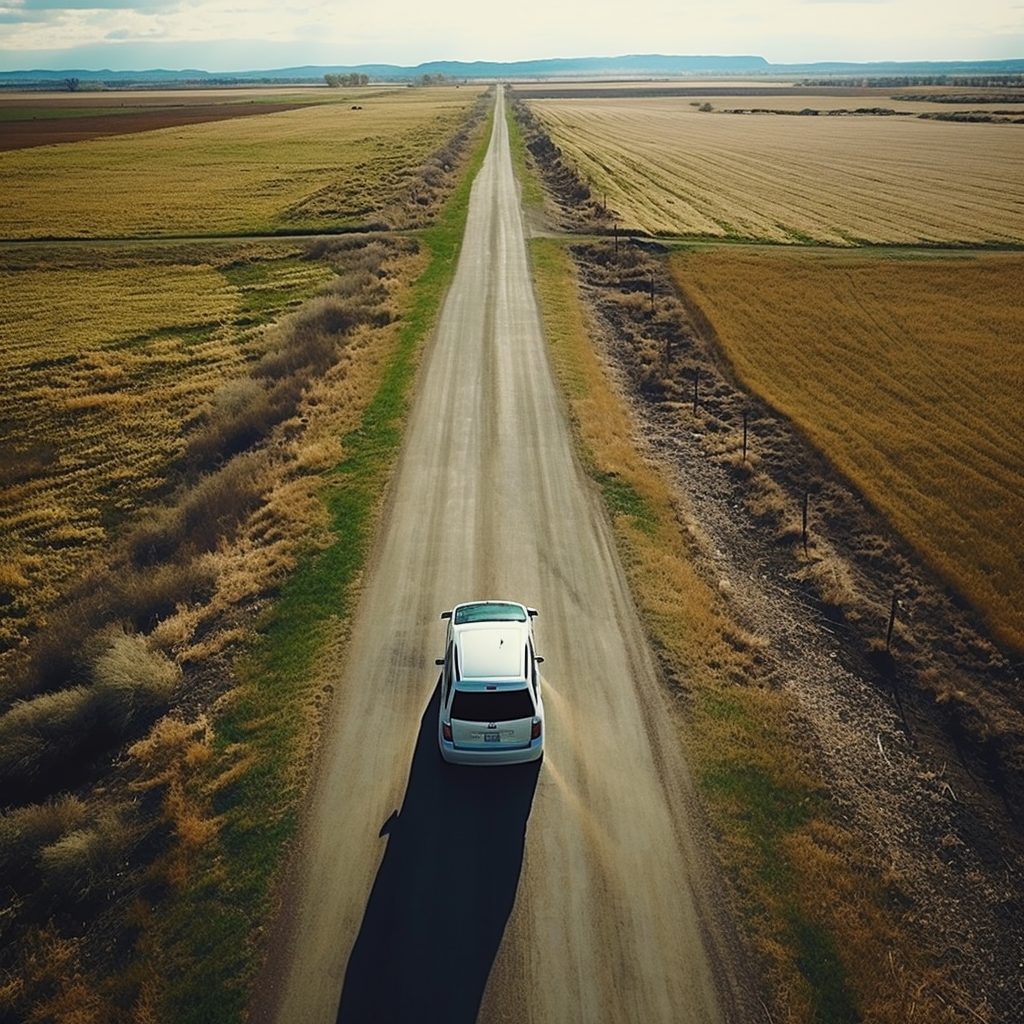Travel back to the 1990s, and you’ll find an SUV market just starting to heat up. The Jeep Grand Cherokee and Ford Explorer had helped light the fire earlier in the decade, but Mercury dealers were left out in the cold as Ford retailers sold hundreds of thousands of Explorers each year.
To overcome the situation, Ford and its Mercury division developed a classic Detroit solution, swapping out some exterior parts and a few nameplates to give Mercury its version of the Explorer. It’s a long-used auto industry practice known as “badge engineering.” This action led to the birth of the Mercury Mountaineer, a slightly fancier Ford Explorer with extra body cladding and a more elaborate front grille.
Debuting for the 1997 model year, the Mountaineer gave Mercury dealers a needed shot in the arm as interest in the Grand Marquis and Milan sedans withered. However, the Mountaineer was short-lived as Ford shut down the Mercury division in 2010 following the lingering effects of the previous decade’s Great Recession. Similarly, General Motors shuttered its Pontiac, Oldsmobile, and Hummer brands (Hummer is now sold under the GMC label).
Despite the Mountaineer’s orphan status, it can still be found on the used car market. Buyers seek them out as a modestly upscale alternative to the stalwart Explorer or because it’s not an Explorer. However, assuming that the Explorer and Mountaineer have the same reliability would be wrong.
A review of engine reliability from installed FIXD sensors shows the dependability of the two vehicles’ corresponding model years don’t precisely match up. It’s a curious difference that’s examined more closely on the Mercury side through this review of the best and worst years of the Mountaineer. The Ford Explorer is covered in a separate best and worst years article.
In addition to analyzing engine reliability (FIXD sensor data produces the FIXD Reliability Score), we look at other factors (safety, fuel economy, maintenance costs, and resale value) to pass a verdict on each Mercury Mountaineer model year.
Further, we’ve added F.I.R.I.S. (FIXD Internet Review Index Score) to the mix. It’s a formula that blends feedback from owners and professional reviewers for additional insights.
Here’s an at-a-glance look at the results, followed by the details.
|
Worst Years |
Why? |
|
First year of the second generation (2002), low engine reliability scores |
|
|
First year of the third generation (2006), poor engine reliability |
Mercury Mountaineer Engine Reliability Score, Safety Ratings, MPG, Value v.s. Value for the Money, and F.I.R.I.S. – Year by Year
Our findings for the best and worst Mercury Mountaineer years are based on:
- FIXD Reliability Scores (engine reliability)
- National Highway Transportation Safety Administration (NHTSA) safety ratings
- Environmental Protection Agency (EPA) fuel economy estimates
- Kelley Blue Book (KBB) market value compared to yearly upkeep costs (based on RepairPal.com data).
- F.I.R.I.S. rankings (a summary of online ratings and reviews)
Our ratings are heavily weighted toward engine reliability. After all, what’s the point of owning a car if the equipment under the hood doesn’t function properly? However, we’re not looking for perfection because these are older vehicles. At best, a mid-tier grade of 5 or 6 (out of 10) is enough to make the cut.
For someone with little money to spend, a FIXD Reliability Score of 3 is the bare minimum. Remember, a Mercury Mountaineer hasn’t left a factory in over a dozen years. At the same time, other characteristics help counterbalance less-than-ideal engine dependability. In particular, we looked for better safety scores, fuel economy, and value. For example, the 2003 Mountaineer only received a 3 for engine reliability, but a respectable safety score and decent MPG give it a thumbs up. We’ll get into the details later.
Our default approach also recommends skipping the first year of a new design or generation. These editions are prone to design and engineering problems that usually get resolved in subsequent model years. Given the age of Mercury Mountaineers on the road (and for sale), there’s no need to tempt fate.
If your budget and preference lean toward a newer midsized SUV, read our best and worst years articles about the Ford Explorer, Chevrolet Traverse, Honda Pilot, and Toyota Highlander.
If you’re in the market for a car, take a look at our article on the USA’s most reliable and cheapest to repair cars in the U.S. Don’t get stuck with a lemon; use our data to help you shop.
Engine Reliability Score – Over The Years
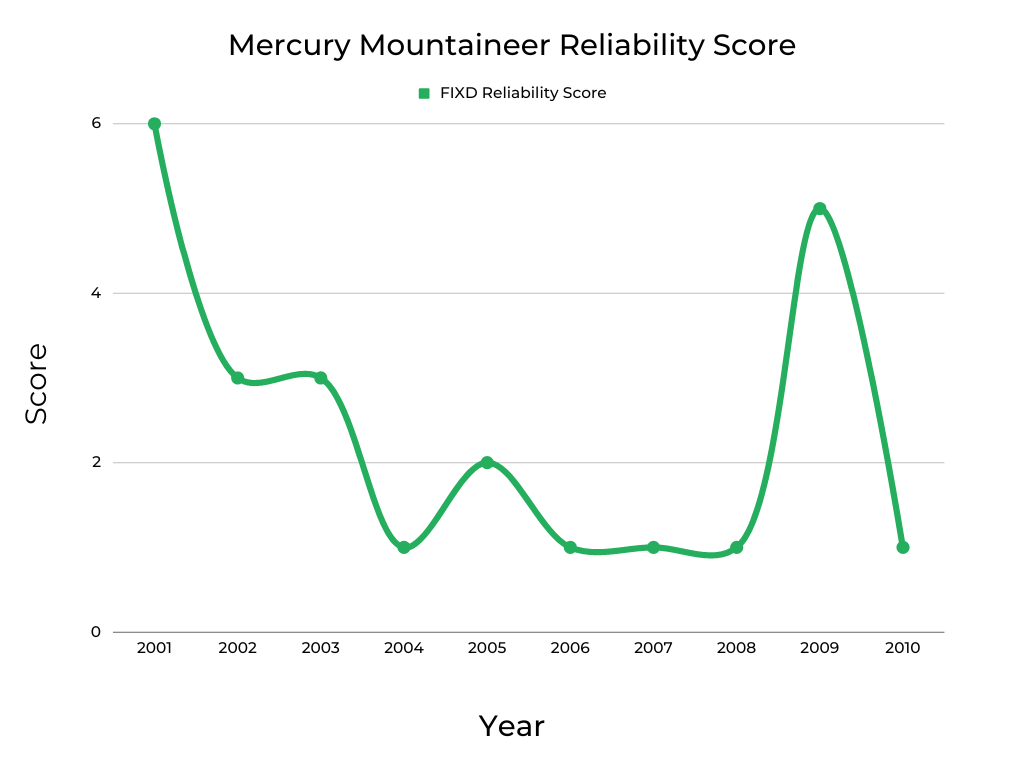
You’re not wrong if you think the FIXD Reliability Scores for Mercury Mountaineers look like one heck of a rollercoaster ride. Yet, this scale measures the frequency of check engine lights in 2001-2010 Mountaineers with a FIXD sensor. 10 is the best possible result, but that’s not an issue among this group (1 is the lowest, and 5 is average).
Our review’s first year (2001) starts in the mid-tier range, but 6 is actually the best of any Mountaineer model year. Things plummet after, with half of these Mountaineers bottoming out. Meanwhile, the 2002 and 2003 editions squeezed out a 3. At least, the 2009 Mountaineer managed to earn a mediocre grade (a 5.0 out of 10).
What’s the net result of all this data? Mountaineers are prone to check engine lights, with some years being noteworthy (and not in a good way). However, all it takes is a loose wire or disconnected hose to cause a warning light to illuminate. Not every check engine light translates into an expensive repair bill.
Read the Ford Check Engine Light article to learn the most common causes of check engine lights in Ford and similar Mercury vehicles.
NHTSA Safety Score – Over The Years
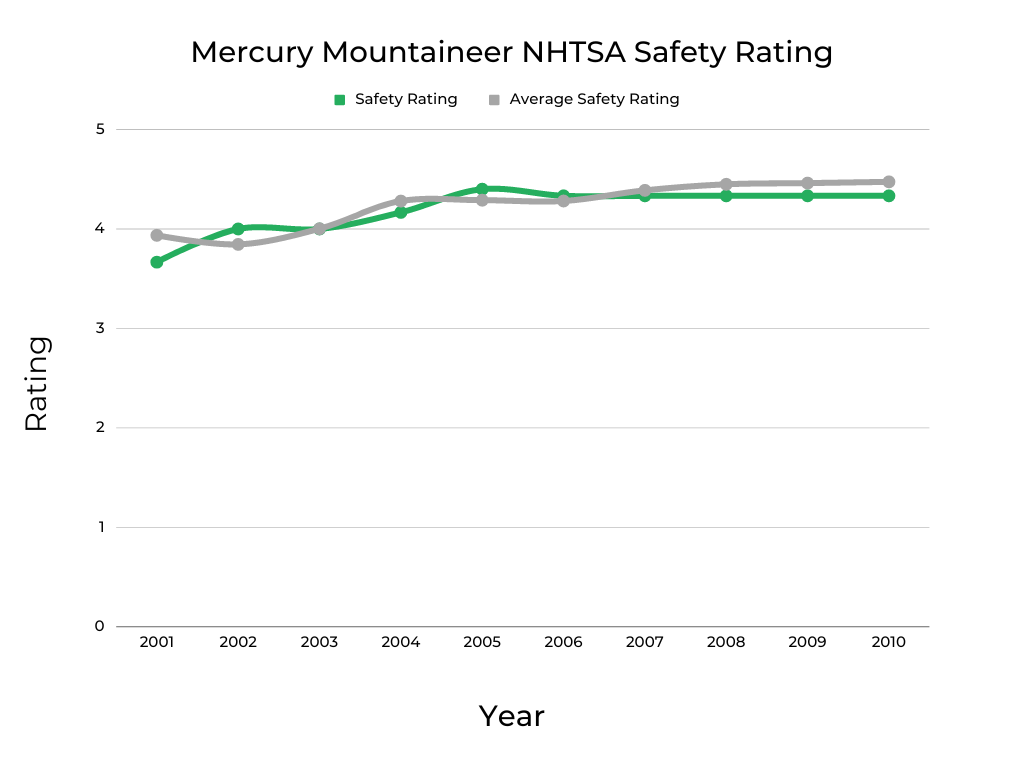
Even 20 years ago, safety was an important factor for SUV buyers. Unfortunately, the 2001 Mountaineers didn’t quite live up to expectations. An NHTSA test score of at least 4.0 (out of 5.0) is ideal, but we still gave the 2001 edition a best-year thumbs up, which is explained below.
What’s assuring is that the Mountaineer performed similarly to the average rating of all tested cars (gray) when comparing the respective model years. So, at least you know the Mountaineer is consistent with other vehicles of the time. For 2004, the Mountaineer scored a respectable 4.2 and never looked back. Later years rated 4.3-4.4.
While focusing on solid crash test scores is always advisable, a safe vehicle also helps keep insurance rates low.
If you live in one of the states listed below, we can show you the cheapest vehicles to insure in yours.
| What Used Cars Are the Cheapest To Insure In: |
| Ohio |
| North Carolina |
| Michigan |
| Georgia |
| Texas |
| New York |
| Illinois |
| Pennsylvania |
| California |
MPG – Over The Years

Throughout its life, the Mercury Mountaineer could be ordered with a large (4.0-liter) V6 or potent (4.6-liter or 5.0-liter) V8, which are great for hauling people or a trailer. However, this power comes at a price: less-than-stellar fuel economy. Still, a 15-16 MPG fuel economy rating isn’t terrible, considering these are older vehicles.
Like other automakers of the period, Mercury sold E85-compatible vehicles from 2002-2005. E85 is a blend of gasoline (85%) and ethanol (15%) that costs less but delivers lower fuel economy (E85 holds less energy than conventional gasoline).
Current Market Value of All Mercury Mountaineer Years vs. Value for the Money

High repair costs can impact resale values, but this isn’t the case with the Mercury Mountaineer. The average Kelley Blue Book (KBB) market value (green) shows a consistent increase as the model years get younger, even though there are fluctuations in annual repair costs (gray)—there’s no data for 2003 and 2004.
Although there are year-to-year differences in yearly upkeep costs, the Mountaineer is relatively affordable. According to RepairPal, the Mountaineer has an average annual repair bill of $671. Only the 2001 model year exceeds this figure by more than 20% at $930.
When shopping for a used (make) (model), it’s important to keep in mind that not all vehicles are cared for equally. To protect yourself from lemons, take along a FIXD Sensor on your test drive. FIXD connects to a free app on your smartphone to tell you more about the vehicle you’re checking out, including check engine lights and other hidden issues that the owner or dealership may be attempting to hide. Click here to learn more and get FIXD for only $19.99 (regular price $59)!
F.I.R.I.S. – FIXD Internet Review Index Score– Over the Model Years
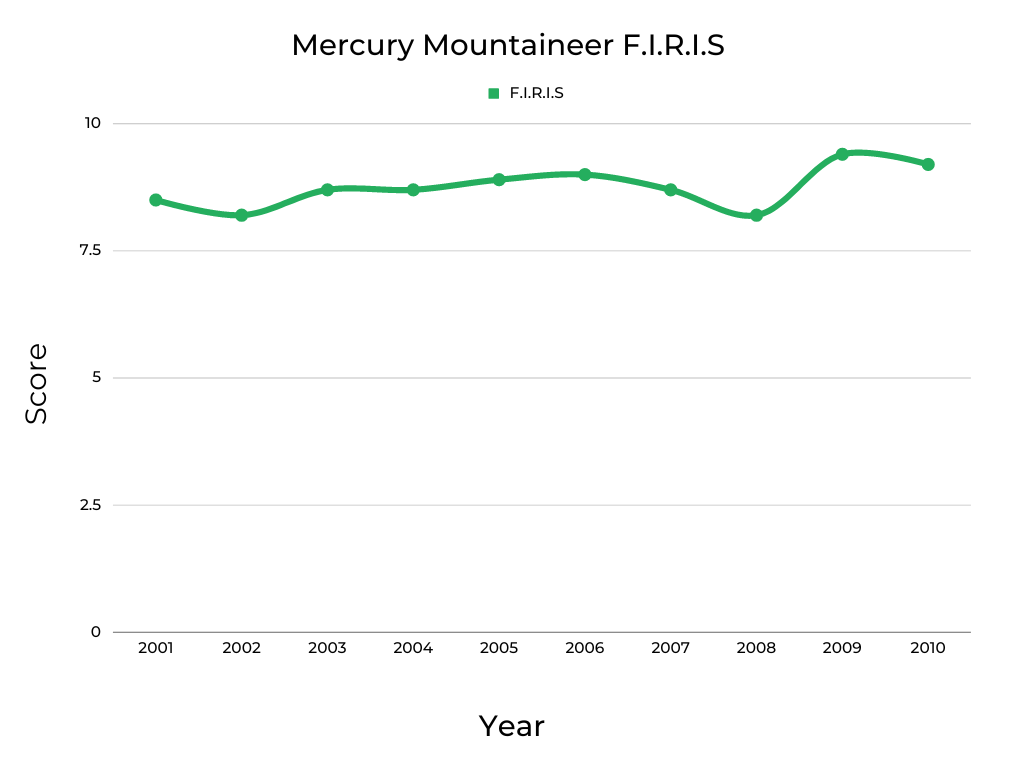
F.I.R.I.S. sounds more complicated than it is. We compile year-specific model ratings from four trusted automotive sites: Cars.com, Edmunds, KBB, and CarGurus. These scores are then averaged and recalculated on a scale of 1-10. Centralizing this information brings together varying viewpoints in an easy-to-understand format.
Owners and reviewers liked the Mountaineer, with all years averaging 8.8 (out of 10). Meanwhile, no individual model year scored below an 8.2, and several editions (2006 and 2009-2010) rated at least a 9.0.
Keep in mind that F.I.R.I.S. scores are mostly subjective. While professional reviewers often use standardized scales to rate vehicles, there’s still some opinion involved in assigning ratings. And, of course, owners are likely biased (people tend to like their cars). So, F.I.R.I.S. scores are helpful, but only to a point. Purchase decisions must also reflect the other factors we covered (engine reliability, safety, fuel economy, upkeep, and market value).
Important Features Timeline
1997: First year of the Mercury Mountaineer
1998: Minor exterior updates
1999: A load leveling system and rear parking sensors are optional
2000: New Premier and Monterey trims join the lineup
2001: No major changes
2002: The second-generation Mountaineer debuts
2003: Upscale trims get leather upholstery as a no-cost upgrade
2004: Top trims are available with second-row captain’s chairs
2005: All Mountaineers get an improved stability control system
2006: The third (and final) generation of the Mountaineer is launched
2007: All versions get standard side curtain airbags
2008: New system links cell phones and MP3 players with the audio system
2009: A new voice control system and satellite radio are added
2010: Last year for the Mercury Mountaineer
The Best Years of the Mercury Mountaineer

Despite the Mercury Mountaineer being out of production for over a decade, several model years are worth checking out. These best-year examples are based on a review of FIXD Reliability Scores, NHTSA crash tests, fuel economy, market value, repair costs, and F.I.R.I.S. rating. We’ve also highlighted the most common diagnostic trouble codes (DTCs) to provide a more complete ownership perspective. Knowing this information can help later on, but it is also useful for a pre-purchase (mention these trouble areas to the mechanic).
2009 Mercury Mountaineer

FIXD Reliability Score: 5/10
FIXD Internet Review Index Score (F.I.R.I.S.): 9.4/10
KBB Value: $3,914
Fuel Economy: 16 mpg
RepairPal Average Annual Repairs Total: $626
Safety Rating: 4.3/5
Let’s get right to the point: if a Mercury Mountaineer is on your shopping list, the 2009 model year is the one to buy. A FIXD Reliability Score of 5 (out of 10) may seem underwhelming, but it’s among the best for any Mountaineer with a FIXD sensor.
The 2009 Mountaineer also deserves praise for below-average annual maintenance expenses of $626 (versus a $671 average for all years).
Meanwhile, a top F.I.R.I.S. score of 9.4 (out of 10) tells us that others think highly of this edition. Sure, this feedback is mostly anecdotal, but there’s strength in numbers.
A 4.3 (out of 5) in government crash tests is equally as notable, while an average fuel economy rating of 16 MPG isn’t half-bad for a 15-year-old SUV. We’ll also mention that the 2009 model year is the only Mountaineer edition without a factory recall (see the 2003 model year below for related information).
The 2009 Mountaineer has its share of check engine lights but at a lower level than most other model years. When problems arise, the DTC involved will likely be P1000, an engine control computer (ECC) error. Usually, this indicates a minor problem: an incomplete diagnostic testing sequence. In most cases, the code will disappear after a few drive cycles. As problems go, this one is negligible.
But before you rush out to buy a 2009 Mountaineer, we’ll need to deliver the bad news: they’re challenging to find. According to carsalesbase.com, Mercury sold only 5,169 examples in 2009 (versus over 32,000 in 2005). A review of online for-sale listings (kbb.com, October 17, 2023) confirms the results; only three 2009 Mountaineers are for sale nationwide.
If you find one, expect to pay $4,000-$6,000 at a dealer. The KBB value above reflects private-party transactions; retail prices are usually higher. Fortunately, there are other best years of the Mercury Mountaineer—keep reading to find out.
2001 Mercury Mountaineer

FIXD Reliability Score: 6/10
FIXD Internet Review Index Score (F.I.R.I.S.): 8.5/10
KBB Value: $1,834
Fuel Economy: 16 mpg
RepairPal Average Annual Repairs Total: $930
Safety Rating: 3.7/5
If your luck runs out with the 2009 Mountaineer, look for the 2001 model year. Yes, it’s almost a quarter-century old, but FIXD sensor data shows it has fewer check engine lights (a better FIXD Reliability Score of 6) than any other Mountaineer. That’s impressive for a vehicle of this age.
At the same time, an 8.5 F.I.R.I.S. score puts this edition squarely in the middle of its counterparts; not great, but not bad, either. A 16 MPG fuel economy rating could be worse.
Yet, we need to get real about the 2001 Mountaineer; it’s far from perfect. A 3.7 NHTSA safety score may be a turn-off for some (remember, 4.0 or better is preferred), and average yearly upkeep costs of $930 make it the most expensive Mountaineer to own. There are also four recalls for the 2001 Mountaineer, among the highest for any 21st-century model year.
This Mountaineer isn’t free of trouble codes. P1506 is one of the likely culprits and involves an idle air control overspeed error, which can affect engine RPM. Often, this can be traced to a vacuum leak ($100-$200 to fix) or a dirty throttle body (throttle body cleaner costs $10-$20). Nonetheless, the problem should be looked at right away.
Code P0307 also appears in the 2001 Mountaineer. This DTC centers on a misfire (in cylinder seven in an eight-cylinder engine) and is severe (meaning get the problem looked at immediately). Remedies could require new spark plugs ($66-$250) or spark plug wires ($180-$240) or fixing a vacuum leak. A fuel pressure regulator runs $200-$400. The shop bill could be higher if a replacement is required for the ignition coils ($230-$640), fuel injectors ($1,500-$1,900), or fuel pump ($1,300-$1,700).
Beyond engine issues, code P0455 is shown to arise in this Mountaineer. This problem concerns the evaporative emission control (EVAP) system (for pollution control). At its simplest, this problem is often corrected by tightening the gas cap or buying a new one ($20-$60). A new EVAP line costs $150-$200, and replacing the EVAP charcoal canister is $200-$600.
So, why buy the 2001 Mercury Mountaineer? Frankly, it’s cheap (well under $5,000) and modestly reliable—an appealing combination for those on a tight budget.
2003 Mercury Mountaineer
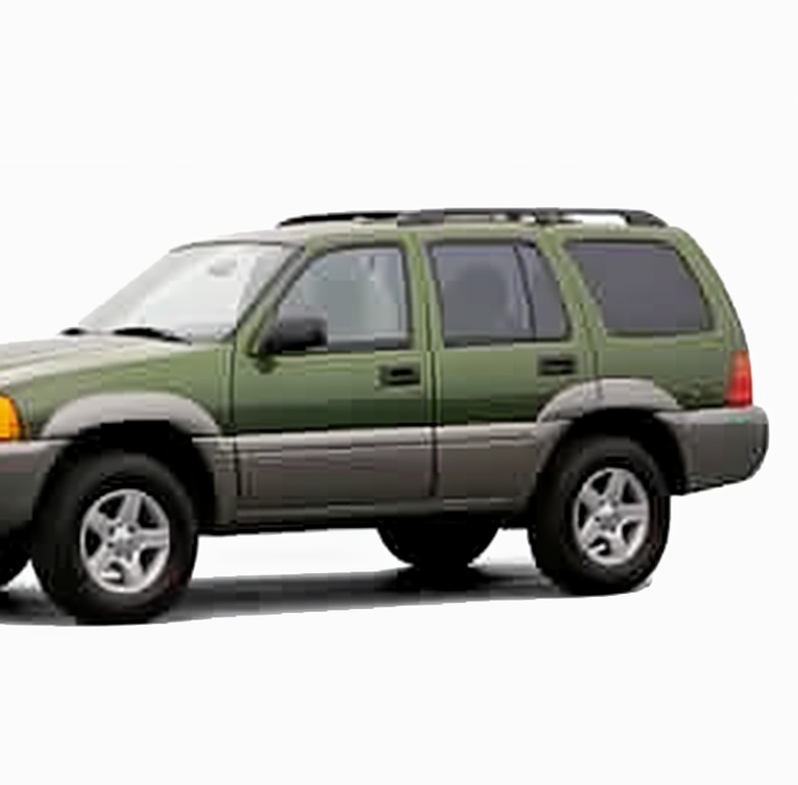
FIXD Reliability Score: 3/10
FIXD Internet Review Index Score (F.I.R.I.S.): 8.7/10
KBB Value: $2,034
Fuel Economy: 16 mpg
RepairPal Average Annual Repairs Total: N/A
Safety Rating: 4.0/5
No one will consider the 2003 Mountaineer to be a candidate for excellence. But it’s a reasonable alternative to the 2001 model year (which can also be hard to find). A FIXD Reliability Score of 3 may be troubling, but this is to be expected with older vehicles. Even if the 2003 Mountaineer started strong, age will result in penalties. At least at a 3 rating, engine reliability is better than most other Mountaineers, which are a 1 or 2. In addition, a F.I.R.I.S. score of 8.7 offers some confidence, as does acceptable fuel economy (16 MPG). Plus, an NHTSA safety score of 4.0 makes this edition the second Mountaineer on our best-years list with good crash test ratings.
Unfortunately, the lack of data about annual repair costs creates some uncertainty. While averages suggest Mountaineers generally don’t require expensive upkeep, a look at error codes provides additional insights.
DTCs P0420 and P0430, a malfunctioning catalytic converter, are common to the 2003 Mountaineer, according to FIXD sensor data. Some repairs can be inexpensive, like replacing the oxygen sensor ($200-$300) or mending an exhaust leak ($100-$200). Yet, it’s not unusual for a 20-year-old vehicle to need a new catalytic converter, which can cost $2,400 to replace, not much less than what the car is worth. A pre-purchase inspection should focus on this area; ideally, you’ve located an example with a newer catalytic converter.
Owners of the 2003 Mountaineer may also encounter code P0316, an engine misfire at startup. Like all misfires, this issue is considered severe and should be dealt with immediately. Misfires can lead to more extensive engine damage. Likewise, the required repairs are similar to other misfires: replacing components (spark plugs, spark plug wires, ignition coils, fuel injectors, a fuel pressure regulator, or a fuel pump) or correcting a vacuum leak.
Although there’s one recall for the 2003 Mountaineer, it doesn’t come from Mercury. A smaller number of replacement windshields sold by Safelite got flagged for problems. So, from an automaker standpoint, this edition is recall-free.
The Worst Years of the Mercury Mountaineer

Picking through the different Mercury Mountaineer model years can be challenging; the worst years outpace the good ones. Let’s get specific; of the ten model years reviews, only three (30%) are worth buying. That leaves 70% with poor FIXD Reliability Scores and other undesirable characteristics (like being the first year of a new generation).
Because shopping for these worst-year Mountaineers is best avoided, we’ll bypass looking at market values and F.I.R.I.S. ratings. However, looking at error codes can be helpful if you already own one of these Mercurys.
2002, 2004-2005 Mercury Mountaineer

FIXD Reliability Score: 1-2/10
FIXD Internet Review Index Score (F.I.R.I.S.): 8.2-8.9/10
KBB Value: $1,834-$2,196
Fuel Economy: 15 mpg
RepairPal Average Annual Repairs Total: $430-$750
Safety Rating: 4.0-4.4/5
One thing says “stay away” from the 2002 and 2004-2005 Mercury Mountaineer: ultra-low FIXD Reliability Scores (1-2 out of 10). These ratings are likely to cause headaches for owners, even if there’s a simple reason for a check engine light. This is a shame because, otherwise, this grouping has OK fuel economy (15 MPG), moderate repair costs, and good crash test results.
Meanwhile, recalls are at a typical pace, with the 2002 Mountaineer having four recalls (it’s the first year of the second generation). There’s also one recall each for the 2004 and 2005 model years, yet both involve the Safelite windshield issue.
But before you start thinking that these SUVs don’t sound too bad, let’s examine frequent error codes.
As with other Mountaineer model years, this group is vulnerable to code P1000, a less bothersome issue with the ECC. These Mercurys are also susceptible to DTC P0171 and P0174, which can be a pain in the wallet. These codes indicate a lean fuel mixture (not enough gasoline or too much air). Corrections involve cleaning the mass air flow (MAF) sensor ($100) or repairing a vacuum or exhaust leak. Sometimes, the car may need a new MAF sensor ($300), oxygen sensor, fuel pressure regulator, or fuel pump. The frequency of these codes (P0171 and P0174) tells us many Mountaineer owners deal with these problems.
Combine poor engine reliability and a high probability of expensive-to-fix DTCs, and we’ll pass on the 2002 and 2004-2005 Mercury Mountaineers.
2006-2008, 2010 Mercury Mountaineer
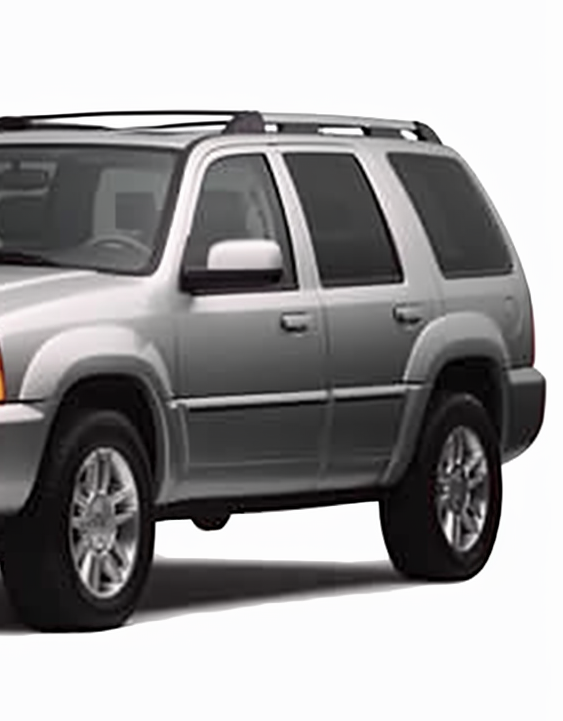
FIXD Reliability Score: 1/10
FIXD Internet Review Index Score (F.I.R.I.S.): 8.2-9.2/10
KBB Value: $2,576-$4,391
Fuel Economy: 15 mpg
RepairPal Average Annual Repairs Total: $430-$750
Safety Rating: 4.3/5
The third-generation Mountaineer launched in 2006, but this updated Mercury falls short in many areas. Curiously, sandwiched between the worst years (2006-2008 and 2010) is the one gem, the 2009 Mountaineer (covered earlier).
You can arguably explain away low engine reliability in the early years due to age, but this isn’t so easy with more recent models. Certainly, the 2010 Mountaineer isn’t new, but it’s new enough to where check engine lights shouldn’t be so frequent.
Like many of the other model years, this group offers admirable (for a larger SUV) MPG and marked NHTSA safety scores. Maintenance costs are reasonable, too. Yet, none of these attributes can overcome inherent reliability issues.
Digging into the error codes, we see that this group of Mountaineers has a long and frequent history of bad oxygen sensors (DTCs P0135, P0141, P0155, and P0161). It’s a moderately severe issue that is usually solved with a new sensor. However, wiring-related troubles and repair bills that can reach $1,000 aren’t unheard of.
Like other Mountaineer years and generations, the 2006-2008 and 2010 editions are known for severe engine misfires, especially code P0300.
We’ll close out our Mountaineer review by noting that the 2006 and 2008 versions are subject to two recalls each, while there is one recall apiece for the 2007 and 2010 model years.
FAQs
What is considered high mileage for a Mercury Mountaineer?
No magic dashboard light flashes “high mileage” on a Mercury Mountaineer. Online for-sale listings (autotrader.com, October 17, 2023) reveal 72 Mercury Mountaineers (2001-2010) available nationwide. Of these, 30 had at least 150,000 miles, and 9 had 200,000 miles or more.
This suggests a high-mileage cap for the Mountaineer in the 150,000-200,000 mile range. As this unscientific review shows, these Mercurys are capable of higher mileage, but you won’t find many Mountaineers with more than 250,000 miles for sale.
Maintenance and usage are contributing factors to longevity. A properly serviced vehicle will last longer than one with a spotty maintenance record. Likewise, a vehicle that’s been diligently driven chiefly on highways will live longer than a car that’s suffered through the rigors of stop-and-go city traffic.
A pre-purchase inspection conducted by a professional mechanic can help determine a vehicle’s potential lifespan.
What other vehicles should I consider?
Given that the Mercury brand has been relegated to history, you’ll need to shop for a Ford or Lincoln if you want to stay in the Blue Oval family. Of course, the Explorer is still being produced, but Ford offers other SUVs, including the larger Expedition. There are also two-row offerings: Ecosport, Escape, Bronco Sport, Bronco, and Edge.
Things are more limited on the Lincoln side, with the Aviator being the Explorer’s high-brow cousin (more badge engineering at work). Meanwhile, the venerable Lincoln Navigator shares the Expedition’s bones. Smaller Lincolns include the two-row Nautilus and Corsair.
Other alternatives include the Buick Enclave, Chevrolet Traverse, GMC Acadia, Honda Pilot, Hyundai Palisade, Kia Telluride, Mazda CX-9, Nissan Pathfinder, and Volkswagen Atlas. There’s a lot to choose from.
A Note About Data and Information Sources
This article has many details about Mercury Mountaineer reliability; here’s what we used for our assumptions and recommendations.
- FIXD Reliability Score & Data: Engine reliability information is captured via the FIXD App.
The FIXD Reliability Score is calculated using the number of DTCs per year, weighted by mileage using 12,000 per year. This is then turned into a scale of 1-10 for easy graphing.
This is an objective score.
- F.I.R.I.S & Data: This data is the result of averaging the score of the Mercury Mountaineer from Edmunds, KBB, Cargurus, and Cars.com.
Those individual Scores come straight from reviewers and owners of the Mercury Mountaineer.
This is a subjective score.
From here, we translate the answers into the F.I.R.I.S as all the answers are out of 5.
Keep in mind that owners may think their car is more or less reliable than it actually is.
One potential problem is that people often buy the same make or model they are used to when they go car shopping, just a newer year.
Ford, for instance, has a number of consumer loyalty awards for the Ford F-Series, Ford Mustang, and Ford Expedition.
Car owners may be so loyal to the make or model they currently own that they would have trouble accurately comparing their cars’ reliability to others.
It’s for this reason that we ask car owners a question that is relative to mileage rather than relative to other cars.
Still, be mindful of the accuracy of these F.I.R.I.S; people’s perceptions and unconscious blindspots can skew data.
We suggest looking at both the FIXD Reliability Score and the F.I.R.I.S for this reason.
- KBB Value: Average private-seller valuations as supplied by Kelley Blue Book (KBB), based on a Mercury Mountaineer with typical mileage for that respective model year.
- Fuel Economy: Mileage-per-gallon estimates according to the EPA MPG on Fueleconomy.gov
- Annual Maintenance/Repair: Upkeep expenses as reported by RepairPal
- Safety Rating: Crash test data collected and reported by NHTSA. We average all ratings for each year to come up with a simplified, average safety score. This makes it easier to look at on a graph.
References
- Mercury Mountaineer model-specific information, edmunds.com (various dates). Retrieved October 17, 2023, from https://www.edmunds.com/
- Model-specific recall information as per the National Highway Transportation Safety Administration. Retrieved October 17, 2023, from https://www.nhtsa.gov/recalls“

Dave Goldberg is an automotive journalist and lifelong car fanatic. He writes for numerous enthusiast and business outlets and is an ongoing contributor to HotCars.com, one of the most popular car culture websites. When he’s not writing or driving, Dave is either under a hood or asleep. His credentials include a BA in Journalism from The George Washington University.

